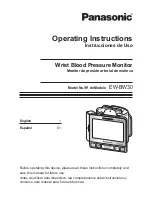
Battery/Tank Monitor BTM2
REV 1A - FEB 2022 - Software Version 1.xPage 21
4.8 Integration into the NMEA 2000 network
The BTM2 monitor is equipped with an additional NMEA2000 interface.
For the connection to the NMEA 2000 network, the cable (N2K cable) available as an accessory is
required. This is then plugged into the 4-pin connector and the Mirco-C (M12) connector is
connected to the NMEA network via a corresponding T-piece. The monitor requires its own power
supply and is not supplied via the network.
The NMEA data are automatically sent cyclically every 2.5 seconds after connection.
This enables the tank levels to be displayed via PGN 127505 (Fluid Level).
and the battery voltages via the PGNs 127751 (DC Voltage Current)
and PGN 127506 (DC Detailed Status) are sent to the NMEA2000 network as soon as the monitor
goes into operation.
The NMEA 2000 instances must be adapted according to your network requirements.
Depending on the chartplotter and multifunction display used (Raymarine, BG, Garmin, Furuno,
etc), it may be necessary to change the existing transducer instance (tank, battery), especially if
there are other transducers with similar data in the network.
Instance 0 is usually selected by default. However, if the data on your chart plotter is not displayed
or is on the wrong page, you should select a different instance for the Philippi unit. If there are 2
Philippi units on the network, different unit instances must be set on each unit (see Setup Monitor
Display).
Basically, each tank or battery must have a unique instance so that they can be identified in the
network. The distinction between diesel, water, etc. is made automatically via the tank type. This is
set in the menu.
The setting of the instances is done in the setup under the corresponding submenus:








































